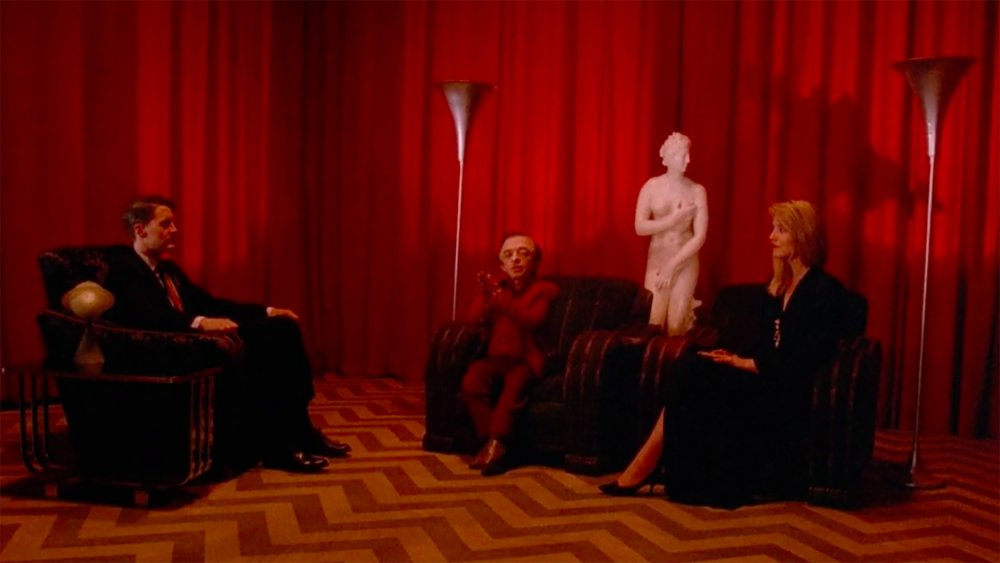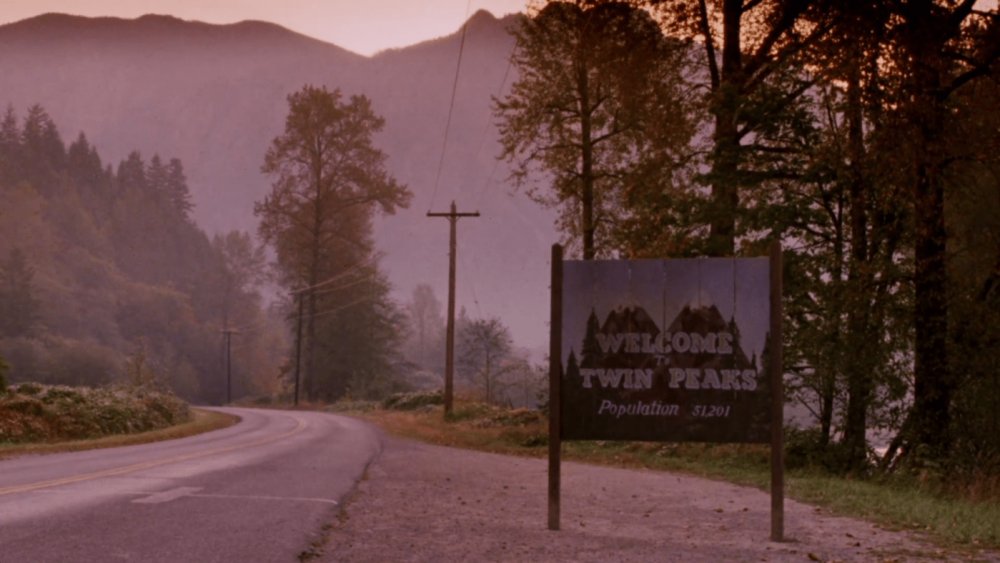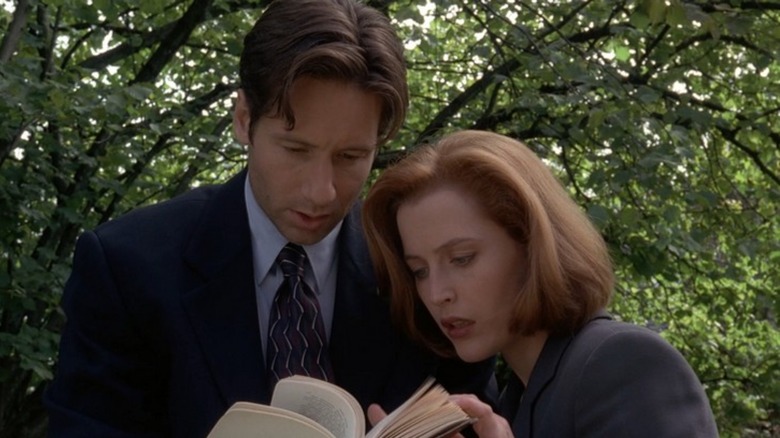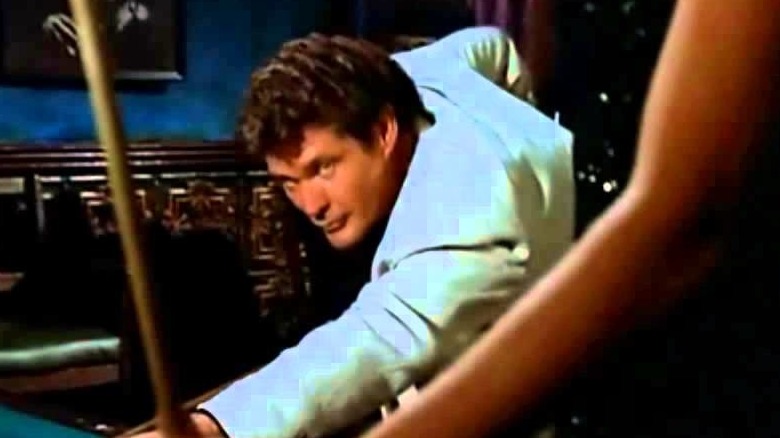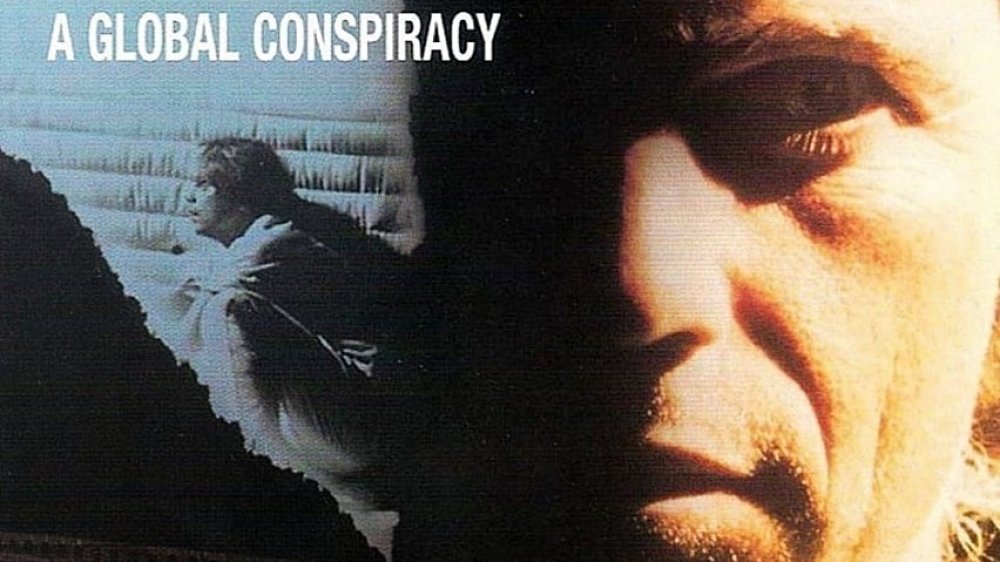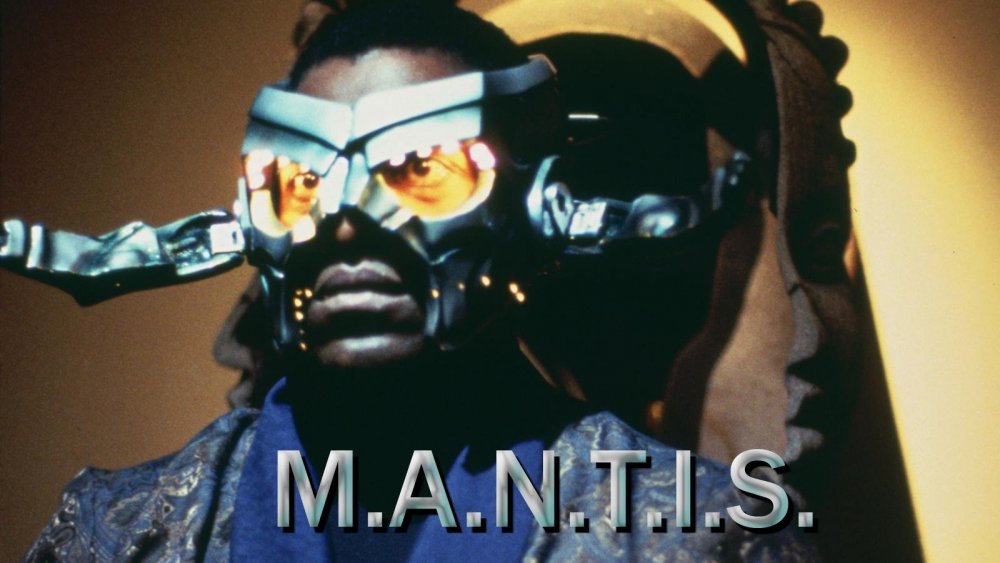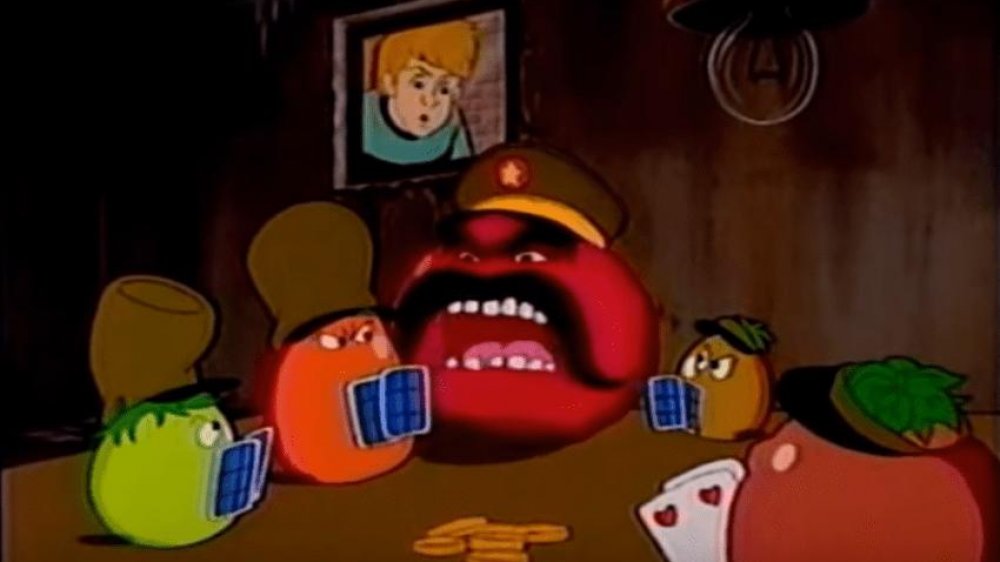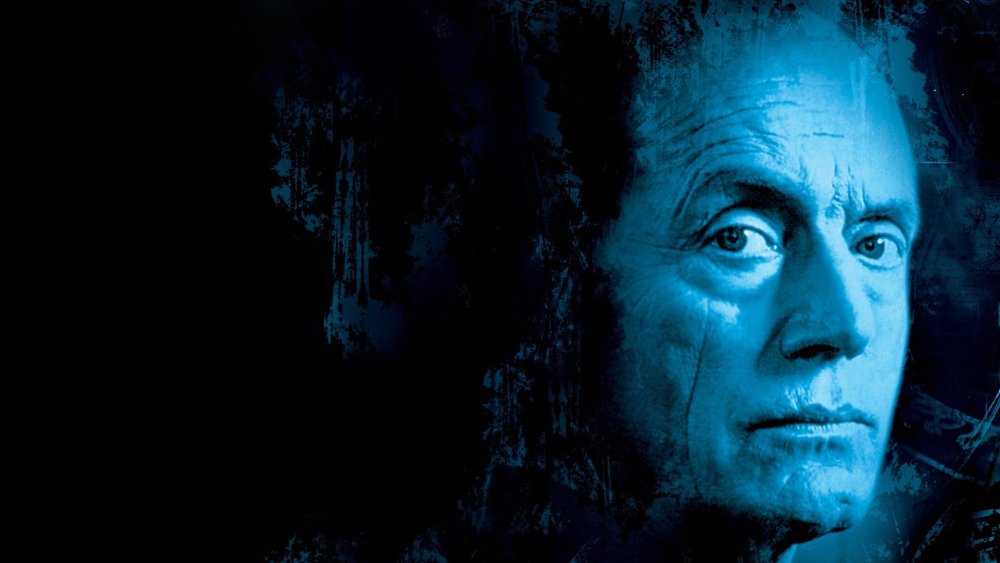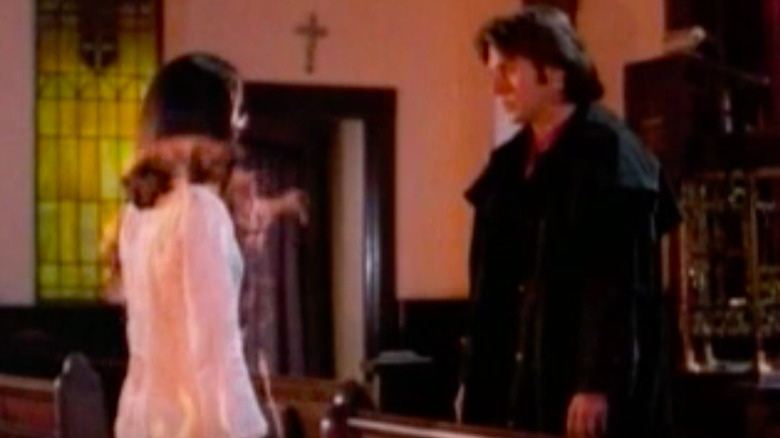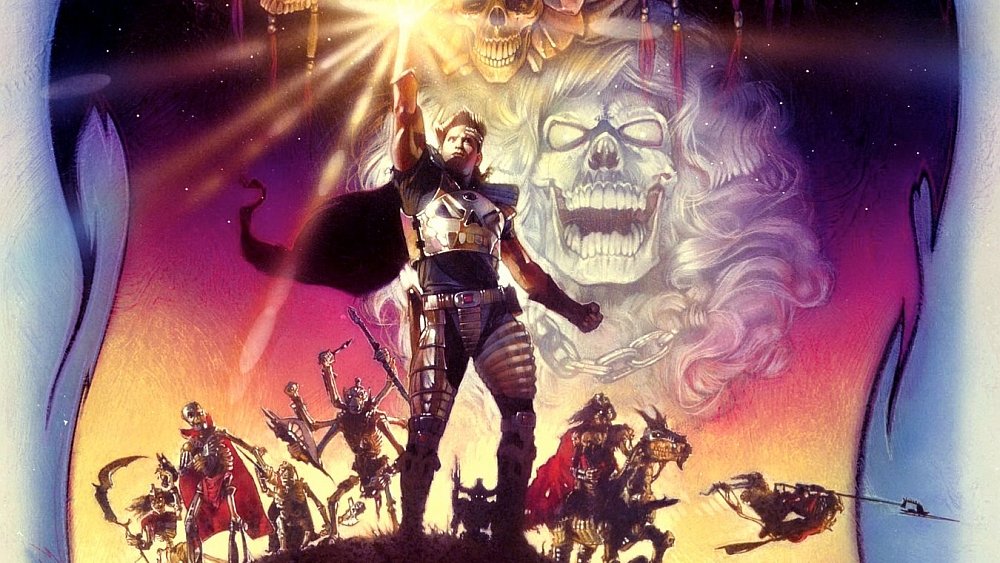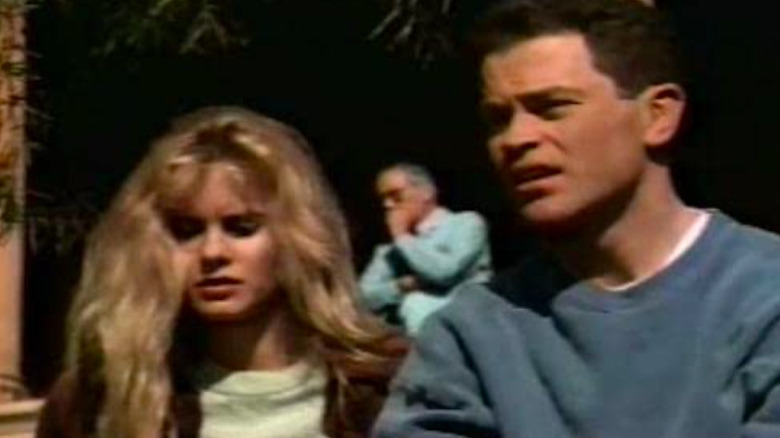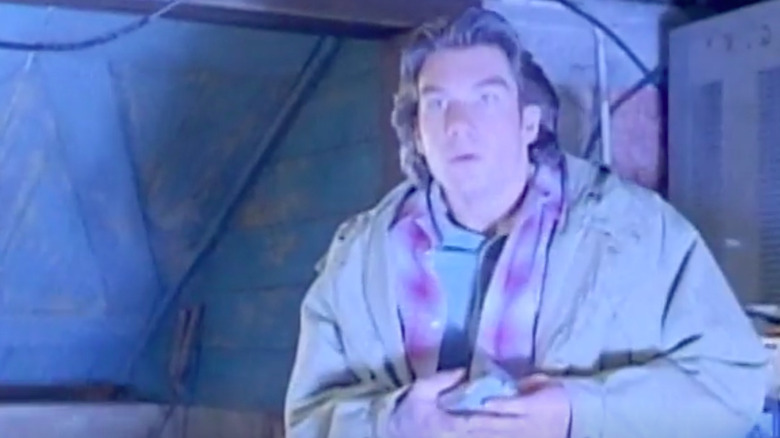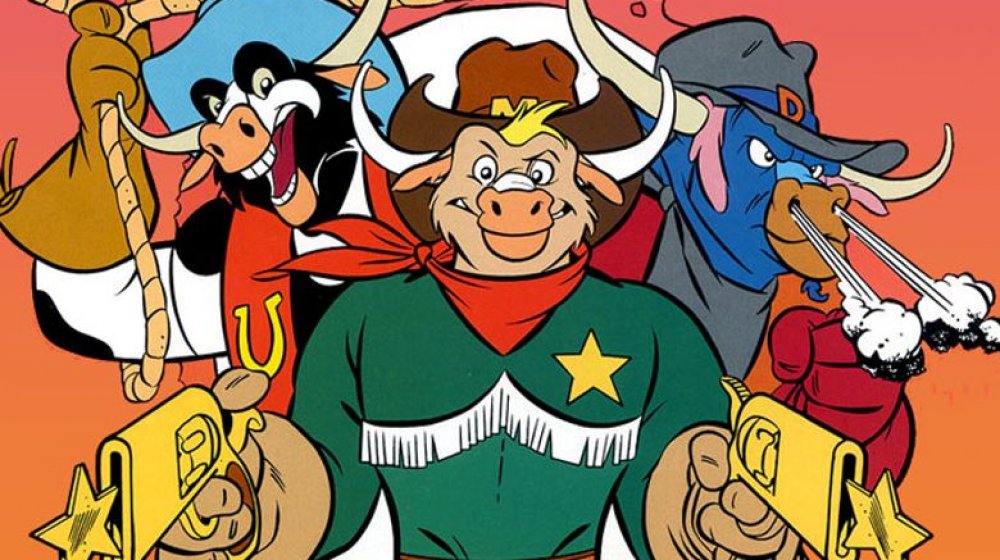'90s TV Shows With The Most Bizarre Premises
The 1990s brought the world some truly incredible TV. From the teenage angst of My So-Called Life to the endless humor of The Fresh Prince of Bel-Air to the launch of a television dynasty with Law & Order, the decade that introduced us to Nirvana and the SNES was also responsible for completely changing the way we watch TV. Cable broadened the scope of what was available. Storylines stretched over the course of entire seasons. Shows "about nothing" captivated viewers for years.
But where Seinfeld proved that a series doesn't need to have a thousand twists and turns in order to find success, plenty of other shows went the opposite route, digging into the depths of obscurity for their premises. TV in the '90s wasn't afraid to be weird, but some shows took that to truly oddball places. Some of these shows were successful, while some of them fell flat. Regardless, they're all worth watching, if for no other reason than to see how hard they tried to be different, new, and interesting. These are the '90s shows with the strangest, weirdest, and most bizarre premises.
Twin Peaks
Twin Peaks made its debut on April 8, 1990, forever changing the way television shows were made, received, and discussed. Created by Mark Frost and David Lynch, the series focuses on the murder of popular high school student Laura Palmer (Sheryl Lee) in the fictional town of Twin Peaks, Washington. The ensuing investigation, led by FBI Special Agent Dale Cooper (Kyle MacLachlan), brings forth a seemingly endless number of suspects from the town's pool of eccentrics, and is marked by supernatural occurrences, doppelgangers housed in extra-dimensional realms, and otherworldly killers with the ability to inhabit the bodies of innocent townsfolk.
The show blends elements from nearly every genre, balancing its serious subject matter with an irreverent and melodramatic tone. Lynch's cinematic vision came from so far out of left field for what television had been up to that point that the complete absurdity of it made viewers' heads spin. The twists and turns of the show's narrative are dizzying: Teenage prostitution, riddle-spouting giants, drug trafficking, and the afterlife itself are all part of the Twin Peaks story. No wonder we're still discussing it, more than 30 years after its debut.
The X-Files
From the moment The X-Files premiered in 1993, it was obvious viewers were going to be in for one hell of a ride. Its pilot episode focuses on a series of teenage deaths that FBI Special Agents Fox Mulder (David Duchovny) and Dana Scully (Gillian Anderson) are tasked with solving. Mulder is convinced they're the result of alien abductions, while Scully believes there's a rational explanation to be found. The truth is that there's more to it than either agent realizes, which sends the pair on an 11-season-long quest to uncover the government's darkest secrets.
Along with its heavy dose of UFO lore, The X-Files explores everything from occult mystery to cyberpunk sci-fi. Highlights of the series include season two's "Humbug," which tells the story of a murderous parasitic twin let loose among a community of circus performers, season three's "Clyde Bruckman's Final Repose," about a life insurance salesman who can see how people will die and who gives Scully a couple of very important predictions, and season four's "Home," arguably the show's most controversial episode, which follows the Peacocks, a very Texas Chainsaw-esque family living and breeding in a small Pennsylvania town. It's wild, it's weird, and it's why we still love The X-Files today.
Baywatch Nights
In the spring of 1989, television audiences were blessed with the glorious seaside campfest that is Baywatch. Starring David Hasselhoff as Mitch Buchannon, the series follows a team of LA County lifeguards as they dive head first into hard-hitting stories like stopping an amateur fire breather from burning down lifeguard towers and inadvertently falling in love with murderers. The show wound up being so successful that it got a spin-off in 1995, Baywatch Nights, which takes the ridiculous premise of crime-fighting lifeguards to a whole new level.
Baywatch Nights follows Garner Ellerbee (Gregory Alan Williams), a police sergeant-turned-private detective who starts a business with Mitch and detective Ryan McBride (Angie Harmon). The first season is pretty standard stuff, but when ratings dipped, the show took a sharp left into X-Files territory, replacing Garner with paranormal expert Diamont Teague (Dorian Gregory) in season two. From there, fast food drug deals and mob kidnappings are replaced with Haitian voodoo cults, vampires, and gelatinous sea monsters. The supernatural update did little to solve the show's viewership issues though, and it was canceled after its sophomore season. Turns out, ripping off a show like The X-Files only works if it's not in direct competition.
Nowhere Man
Photojournalist Thomas Veil's life is turned upside down when, in the middle of a romantic dinner with his wife, he returns from the bathroom to find that his entire existence has been erased. His wife is gone, his best friend is dead, and there's someone else living in his house. Starring Bruce Greenwood as Thomas, Nowhere Man follows Thomas' quest to uncover the truth of his stolen identity, which traces back to a secret government organization and a photograph Thomas took of four US soldiers being hanged in South America. It ran for one season before it was canceled.
The series plays out much like 1963's The Fugitive, in that Thomas travels from city to city in his search for clues about the organization, picking up odd jobs to fly under the radar while he gets closer to the truth. Along the way, he comes into contact with a string of strange characters, including a 10-year-old blind psychic, a UFO enthusiast, and several actors hired by the organization to bring Thomas in. Ultimately, the truth behind the organization and Thomas' lost identity leaves him with more questions than answers, but with the show's early cancellation, audiences were never given the opportunity to delve any deeper.
M.A.N.T.I.S.
M.A.N.T.I.S.' pilot episode is vastly different from the series that follows. It begins as the story of one of the first black superheroes on TV: Dr. Miles Hawkins (Carl Lumbly), a biophysicist who becomes paralyzed after being shot by a police sniper during a riot. He develops an exoskeleton that offers him mobility and more — the Mechanically Augmented Neuro-Transmitter Interactive System — and, rather reluctantly, sets out on a mission to fight crime and corruption.
Before the series went to air, however, serious changes were made, including the replacement of its diverse cast with one that features only two people of color outside of the show's main character. Plot points that focused heavily on racial issues were changed in favor of fantasy elements like parallel universes and time travel. The series finale involves an invisible dinosaur frozen in a glacier. This retooled concept was met with criticism, although network execs were quick to cite creative reasons for the changes, with Bob Greenblatt, senior vice president of drama series development at Fox, telling the Los Angeles Times that he "thought the pilot was too grim and too realistic ... We didn't want to do episodes about the human condition every week." So instead, audiences got genetically altered jellyfish people. This is one series that's bizarre for the worst possible reasons.
Attack of the Killer Tomatoes
The 1978 cult classic Attack of the Killer Tomatoes has, undoubtedly, one of the most bizarre premises in cinematic history. Giant, man-eating tomatoes descend upon the country, throwing it into chaos. The only hope for humanity lies with a group of ragtag heroes, including a man literally named Mason Dixon and a disguise expert who blows his cover by asking a killer tomato to "pass the ketchup." Victory comes from a ballad called "Puberty Love." It'd be difficult to build upon that premise any further, but between 1990 and 1991, Fox Kids did exactly that with Attack of the Killer Tomatoes, the animated series no one saw coming.
Five years after The Great Tomato War, Dr. Putrid T. Gangreen has continued his tomato experiments, which now include tomato variants like Tara, a tomato-turned-human and her "dog" FT, a fuzzy tomato that barks. Tara befriends Chad, our 10-year-old hero, and gets a job working at Chad's uncle Wilbur's Tomatoless Pizza Parlor. Together, the trio attempt to stop Gangreen from taking over the world, then work alongside him to defeat a group of twice-mutated tomatoes in revolt. One can't help but wonder ... are there adults wandering around today whose dislike of gazpacho, bruschetta, and marinara sauce springs from this one bizarre cartoon?
Millennium
The '90s were chock full of TV shows that married police drama to supernatural elements, and Millennium, which ran on Fox for three seasons between 1996 and 1999, was arguably one of the best — and strangest. That probably has something to do with the fact that Millennium happens to be the second series created by Chris Carter, The X-Files being his first. The show follows Frank Black (Lance Henriksen), a former FBI profiler who works as a consultant with the Millennium Group, a shadowy organization hoping to bring about the end of the world. Frank doesn't know this at the onset of the series, of course, and instead uses his psychic abilities, which allow him to see what a killer sees, to aid in apocalypse-themed investigations.
Millennium was frequently compared to the film Se7en, though it takes a more lighthearted approach to its narrative. Season two's "Jose Chung's Doomsday Defense," written by Darin Morgan (who wrote The X-Files episodes "Humbug" and "Clyde Bruckman's Final Repose") parodies Scientology, while "Somehow, Satan Got Behind Me," also by Morgan, follows a group of demons sharing stories at a coffee shop. The show has a wackiness to it that keeps it from getting too bogged-down in its serious elements — and somehow, that willingness to joke makes the show all the more bizarre.
American Gothic
Executive produced by Sam Raimi, American Gothic is a horror drama that ran on CBS for one season between 1995 and 1996. It tells the story of Caleb Temple (Lucas Black), a young boy in the fictional town of Trinity, South Carolina, who comes to find out that he's the son of the literal Devil, who rules over the town by posing as its friendly sheriff, Lucas Buck (Gary Cole). After Lucas kills Caleb's entire family, he sets about grooming him to take over the throne, but is stopped with the help of Trinity's newest transplant, Dr. Matt Crower (Jake Weber), Caleb's cousin Gail (Paige Turco), and the ghost of his sister, Merlyn (Sarah Paulson).
That plot is strange enough as is, but CBS pulled a Firefly with the series and aired the season out of order, cutting four episodes completely from its original run. As a result, some key moments wound up being omitted from the story, including one in which Gail uncovers the truth behind her parents' mysterious deaths, and another in which Lucas enlists the help of the Boston Strangler's ghost to deal with Merlyn.
Skeleton Warriors
On the planet Luminaire, the forces of good and evil fight for control of the powerful Lightstar Crystal. On one side is Baron Dark, whose success in capturing one half of the crystal has turned him into a living skeleton with the ability to change others into skeletons for his army. On the other side is Price Lightstar and his family, who've managed to hold onto the other half of the Lightstar Crystal, which has imbued each of them with fantastic and decidedly less skeleton-y powers.
Skeleton Warriors ran for only 13 episodes on CBS between 1994 and 1995. Things change on a dime in Luminaire: Baron Dark would have the upper hand, then the next week, it would belong to Prince Lightstar. The show ends with Baron Dark's defeat and the destruction of the Lightstar Crystal entirely. While the story never evolves beyond the power struggle at its core (this is no Batman: The Animated Series), it did spawn its very own toyline, a Marvel comic series, and a video game, proving that it didn't take much to keep '90s kids entertained, given a cool enough aesthetic. Skeleton Warriors exists today as an artifact from a bizarre time in animation: Part misty fantasy, part steely sci-fi, part death metal t-shirt.
VR.5
The '90s had a real fascination with the idea of virtual reality. Films like 1992's The Lawnmower Man, 1995's Johnny Mnemonic, and 1999's The Thirteenth Floor all explore the virtual realm, complete with cutting edge computer graphics straight out of Tomb Raider. Now, these kinds of sequences look pretty laughable, but in 1995, they were extremely cool. VR.5 is the embodiment of that trend, from its dramatic shots of people typing to its cyberpunk visors.
Lori Singer stars as Sydney Bloom, a lineworker for a telephone company who dabbles in virtual reality in her off time. When Sydney was a child, her scientist father and twin sister died in a tragic car accident, and she continues to struggle with their passing. When she accidentally discovers she has the ability to tap into others' subconscious via her own VR world, Sydney becomes the target of the Committee, a secret organization that may have actually been behind her family's death.
VR.5 didn't last long — only 13 episodes total, with three of them not airing at all during the show's run on Fox. But in those 13 episodes, audiences were treated to implanted memories, mirror worlds, and a whole lot of bad CG.
Sliders
When it premiered in 1995, Sliders was a fun, original sci-fi trip through parallel worlds, in a similar vein to 1989's Quantum Leap. Grad student Quinn Mallory (Jerry O'Connell) is researching anti-gravity when he inadvertently opens a portal to another Earth, which pulls him and three friends — Wade Welles (Sabrina Lloyd), Professor Maximilian Arturo (John Rhys-Davies), and Rembrandt "Crying Man" Brown (Cleavant Derricks) — into a series of alternate universes. Each episode takes place on a different world, where, frequently, the group comes face to face with parallel universe versions of themselves.
For the first two seasons, the show focuses on navigating the social and political landscapes of each new world the group visits. Earths where Great Britain won the Revolutionary War, or men are treated as the weaker sex while women hold the most powerful positions in the country make for some truly interesting TV. Then, at the start of Sliders' third season, focus shifts to more action-heavy storylines, and Kari Wuhrer is brought in as Maggie Beckett, a military captain who wears as little as possible. Things only get worse from there. Eventually, the entire cast, with the exception of Derricks' Rembrandt, are replaced by new characters or, in the case of O'Connell's Quinn, an alternate version played by a completely different actor. It's disappointing, but hey, at least it's as weird as the rest of the show.
Wild West C.O.W.-Boys of Moo Mesa
Wild West C.O.W.-Boys of Moo Mesa ran on ABC for two seasons between 1992 and 1993. As you might have guessed from the title, the series' premise is completely bonkers. When a mysterious comet hits the southwest sometime during the 19th century, it forms a mesa high in the clouds where its inhabitants became "cow-metized," mutating into a race of cow people whose way of life is strikingly similar to the regular human cowboys that exist below. Keeping peace in this bovine territory are the C.O.W. (Code Of the West) Boys, a group of lawmen led by Marshal Moo Montana that includes The Dakota Dude and the Cowlorado Kid. The C.O.W.-Boys fight back against a series of villains, led by Mayor Oscar Bulloney and Sheriff Terrorbull.
For the most part, the C.O.W.-Boys deal with pretty standard wild west fare — cattle drives, oil strikes, and masked robberies. But going into its second season, Wild West C.O.W.-Boys of Moo Mesa toys with some really out-there storylines, including one where the leader of a traveling circus hypnotizes the town's residents into handing over their money, and another where the C.O.W.-Boys cross paths with a cattle/gargoyle hybrid called a Cowgoyle. The '90s truly were a wonderful time to be alive ... even if you were a cow.
